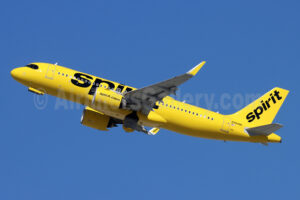On 9 November 1942, 31 B-17s and 12 B-24s took off from England and attacked the German U-boat base at Saint-Nazaire on the west coast of France.
The B-17s, flying between 7,500 and 12,000 feet, faced heavy flak. Three of the bombers were lost, and 22 suffered damage. The B-24s attacked from 17,500 to 18,300 feet and only were damaged. Overall, the mission failed to destroy the heavily reinforced submarine pens.
Allies Flew More Than 2,000 Sorties Against Saint-Nazaire
During the war, many other Allied attacks were launched on Saint-Nazaire and other U-boat bases in France. Between October 1942 and October 1943, the U.S. Army Air Forces’ Eighth Air Force flew more than 2,000 sorties attacking German submarine bases at Lorient, Saint-Nazaire, and Brest in France and against Bremen, Emden, Kiel, and Wilhelmshaven in Germany. Saint-Nazaire itself held off 50 attacks.
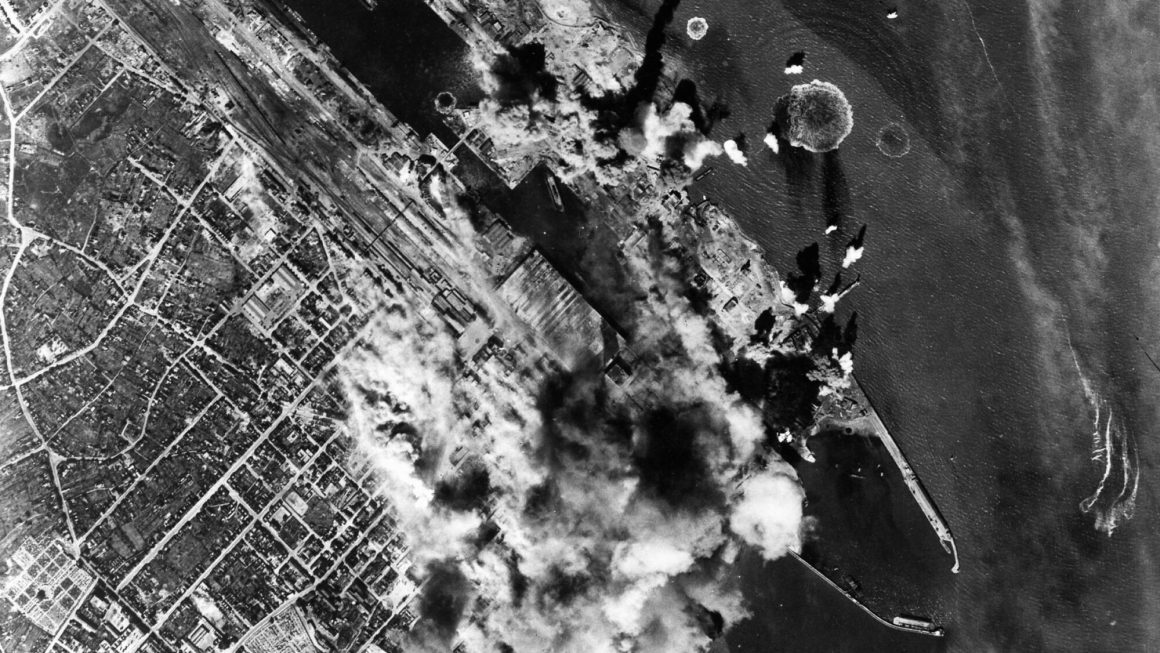
Thick, Reinforced Structure Built To Withstand Bomber Attacks
The sub pens at Saint-Nazaire were massive; the Germans designed them specifically to withstand bomber attacks. The walls were 11 feet thick, and the roofs were 16 feet thick, and in some places, they were 29 feet thick. The structure was made of granite and reinforced concrete. The base was 908 feet long, 400 feet wide, and 60 feet tall.
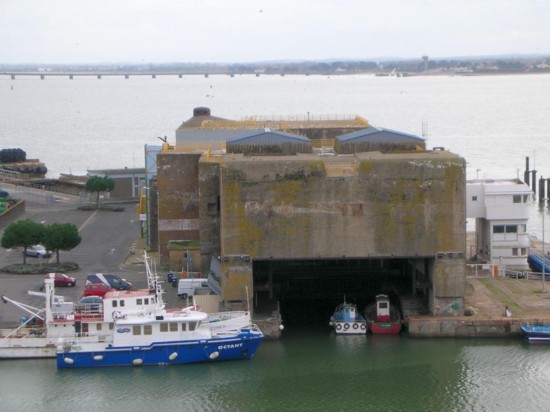
The base had 14 pens and could hold 20 U-boats. Pens 1 – 8 were dry docks for working on submarines. Pens 9 – 14 were wet docks and could hold two U-boats each. The base also had 150 offices, 97 storage magazines, and 62 workshops.
Germans Used Prisoners for Labor to Build U-boat Base
The German Organization Todt built the Saint-Nazaire base and others like it. For most of the labor, they used foreign workers, prisoners of war, and concentration camp inmates. Organization Todt used 1,400,000 men during the war to build sub bases, bridges, blockhouses, and roads.
Work on the project began in February 1941 after the Nazis conquered France. Approximately 4600 workers used 627,816 cubic yards of concrete in the construction. They finished the middle section of the base in four months and completed the entire complex in June 1942.
Some Doubted Possibility Of Success of Air Attacks Against Saint-Nazaire
Some U.S. leaders doubted whether an air attack on Saint-Nazaire could be successful. In October 1942, General Carl A. Spaatz told Gen. Henry H. “Hap” Arnold, “Whether or not these operations will prove too costly for the results obtained remains to be seen. The concrete submarine pens are hard, maybe impossible nuts to crack.”
Initial bombing missions were not successful in destroying the pens, and Allied bombers shifted their focus to the outlying facilities to attempt to disrupt the operations of the base.

Saint-Nazaire was a rail center and a port, and the Allies bombed it many times, resulting in nearly 500 civilian deaths and destroying 85% of the city. Most of the residents evacuated it by the spring of 1943.
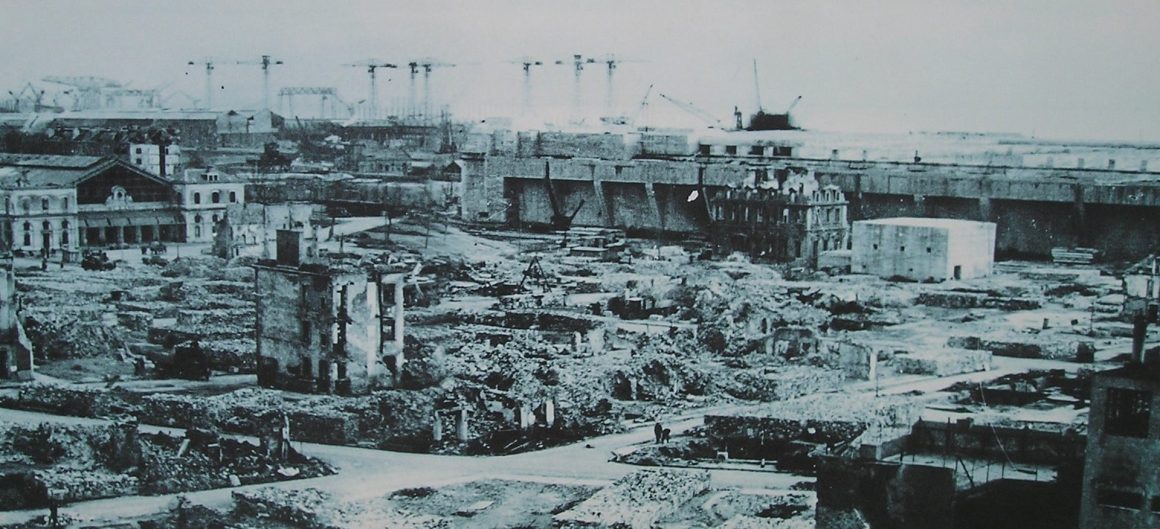
The bombers never did succeed in destroying the sub pens at Saint-Nazaire, and they are still intact today.
British Launch Commando Attack on Saint-Nazaire Dry Dock
Before U.S. bombers began attacking Saint-Nazaire, the British made their own assault on it in March 1942 with Operation Chariot. Instead of attacking the sub pens, they wanted to destroy the large dry dock used for surface ships.
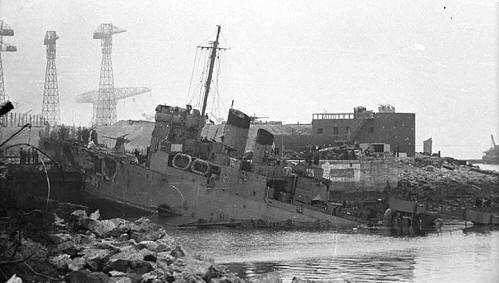
The Germans had built the battleship Turpitz and planned to deploy it against Allied shipping in the Atlantic. They wanted to complete the dry dock facility at Saint-Nazaire and use it as a support base for the battleship. In early 1942, Turpitz was in Norway, and the Germans decided to keep it there until Saint-Nazaire was ready. The British knew this and planned an assault on the base.
For Operation Chariot, the British plan was to pack a ship, the HMS Campbeltown, with tons of high explosives and ram it into the gates of the dry dock. Commandos on board the vessel would leave the ship and attack the base. The explosives would then detonate and destroy the gate, leaving what was left of the ship stuck there, blocking the facility.
British Attack Leaves Drydock Unusable for Remainder of War
The raid succeeded, killing over 400 Germans and making the dry dock unusable for the remainder of the war. The Germans never deployed the Turpitz in the Atlantic, which undoubtedly saved many lives and allowed valuable supplies to reach Europe. Even though Operation Chariot was successful, air power again failed to destroy Saint-Nazaire. As part of the mission, the British launched a bomber attack to try and draw the Germans’ attention away from the dry dock.
The bombers only managed to alert the Germans that something was happening. As a result, the British commandos did not surprise the Germans. Out of two hundred and forty-one Commandos that participated in the mission, 59 were killed, and 109 were captured. In addition, 85 Royal Navy personnel were killed, with 29 captured by the Germans.
Total
0
Shares
Credit: avgeekery.com





